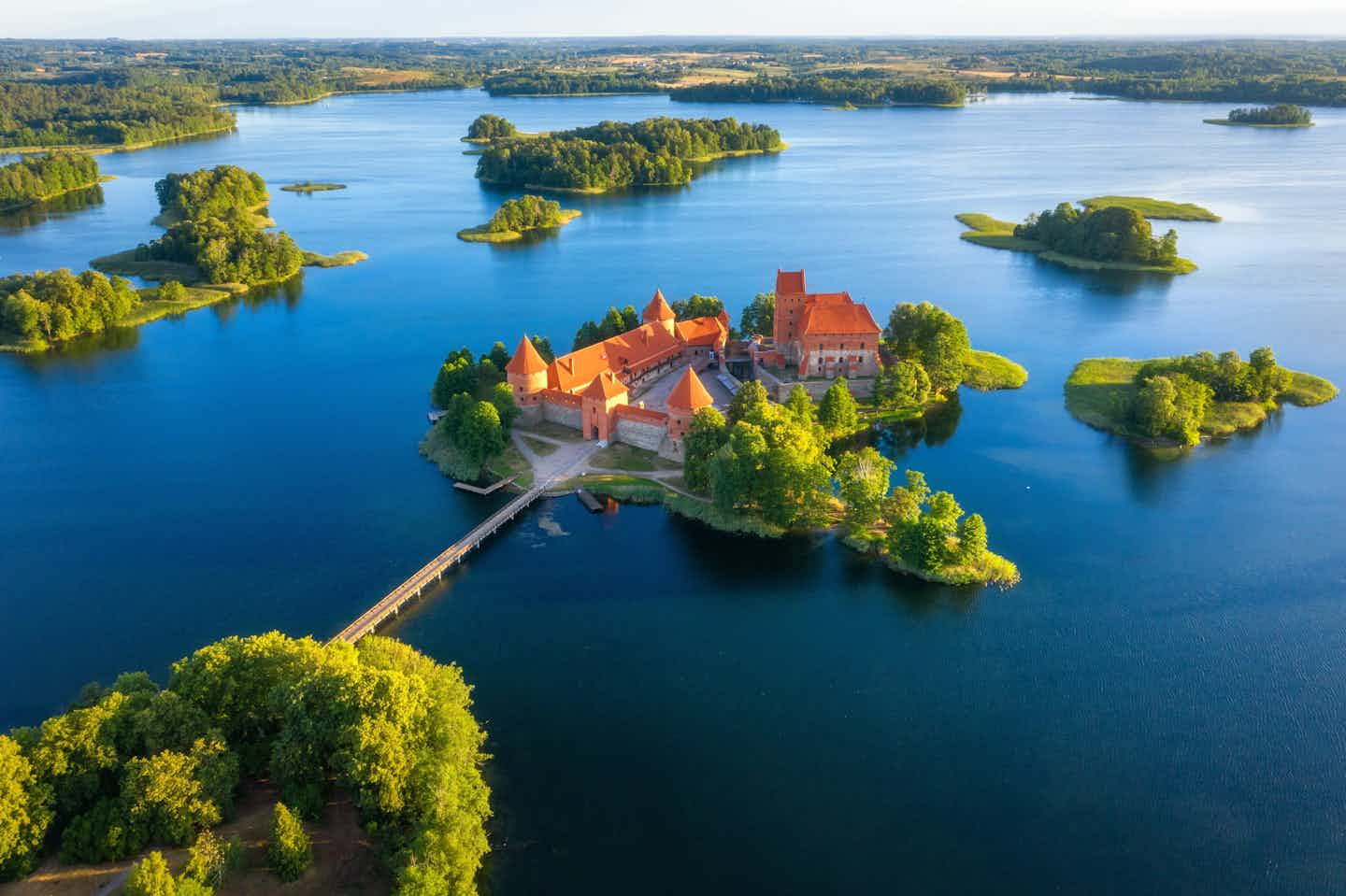Tamara Lakeside Tourism Resort
Lithuania / District of Vilnius
Rate now

-
-
Lithuania, a pearl of the Baltic region, offers unique camping experiences. From the impressive dunes of the Curonian Spit to the idyllic lakes and moorlands, campers can expect an impressive variety of natural beauty. The rich cultural history, visible in the baroque architecture of Vilnius and medieval castles, enriches every journey. Ideal for road trips, travellers enjoy pleasant temperatures and the lively Baltic Midsummer Festival in summer.
14,400+ campsites
all around Europe196,700+ reviews
from real campers15 million users
on the PiNCAMP sites5.800+ campsites
with trusted ADAC classification| Number of campsites | 31 |
|---|---|
| Campsite reviews | 63 |
| Ø-ratings | 3.3 |
Many travellers are drawn to Lithuania's beaches for camping. The dunes on the Curonian Spit, the maritime backdrop of the harbour facilities in Klaipeda and the seaside resorts around Palanga are among the top addresses in summer. In the hinterland, lush green meadows and lakes are the highlights for anyone who wants to get out into nature with a motorhome.
Lithuania is a true pearl of the Baltic States that is best explored on a road trip. If you are travelling by camper van, you can change locations and get to know everything from the beaches on the Baltic Sea to the Hill of Crosses near Siauliai and the baroque architecture of Vilnius, while the vast meadows and forests in the hinterland tempt you to go on bike tours and horseback rides. Numerous campsites in Lithuania, as well as farms, offer guided excursions with the animals. The many idyllic lakes and moorland areas in nature parks such as Grazutes and Labanoro on the border with Belarus and Latvia are also worth a visit.
Travelling by car from Germany, you can drive right across Poland. If you are travelling from southern Germany, Hesse or Rhineland-Palatinate, it is best to take the A4 motorway to Dresden and cross the border at Görlitz. From Wroclaw, the journey continues up to Warsaw. Travellers from northern Germany usually choose the route via Berlin to Warsaw. Alternatively, travellers can follow the Baltic Sea coast, but will have to drive well around the Russian region of Kaliningrad. Holidaymakers can reach Lithuania via a small corridor between Russia and Belarus, which stretches from Suwalki to Marijampole. The famous Via Baltica, which stretches all the way to Estonia, already runs here.
Kaunas, Lithuania's second largest city, is the most important transport hub. This is where the road links to the coast and Vilnius branch off. The distance from Berlin to Lithuania is around 1,000 kilometres. Hamburg is 1,300 kilometres away, Cologne 1,500 kilometres and Munich also around 1,500 kilometres from the destination. Tolls are charged on some motorways when driving through Poland. In Lithuania, however, the roads are free of charge.
Lithuania offers a wide range of camping options, from holidays on the Baltic Sea beach to fishing and cycling tours in the lakes and marshlands of national parks such as Dzukijos. Medieval towns such as Vilnius and ancient castles such as Trakai are well worth a visit.
The elongated island off the coast of Klaipeda is Lithuania's best-known tourist destination. It is famous for its dunes, which are perfect for hiking and exploring. Well-developed coastal paths tempt you to go cycling. In midsummer, you can swim in the Baltic Sea. In the small town of Nida, the summer house of the German writer and Nobel Prize winner Thomas Mann is an attraction.
With its Italian-inspired baroque architecture, the capital of Lithuania is a real speciality in the Baltic region. Its centre fascinates with magnificent buildings such as the university and neoclassical buildings such as the cathedral. In Vilnius' surroundings, the Trakai campsites are among Lithuania's best. Holidaymakers here have several lakes on the doorstep of their motorhome and can visit the historic castle.
Located in the southern Memel region, Druskininkai is Lithuania's best-known spa town. The name of the small town comes from the salt and mineral-rich springs in the region. These unfold their healing effects in the thermal baths. Druskininkai is also home to a unique indoor ski centre. The spa town is surrounded by the Dzukijos National Park with its mystical moorland and marshland landscapes.
Most holidaymakers choose to go camping in Lithuania between May and the end of September. This is when the temperatures are pleasantly warm and you can enjoy various activities in the fresh air. Those who want to go swimming should travel in July and August. The outside temperatures are usually above 20 degrees Celsius - the water is around 19 degrees Celsius. The thermometer in the lakes inland shows slightly higher values. The days in May and June are ideal for sightseeing. Guests can also experience the Baltic Midsummer Festival on the longest day of the year. In spring and autumn, temperatures of around 16 to 18 degrees Celsius are typical. From November onwards, you can expect sub-zero temperatures at night, which last until the beginning of April.